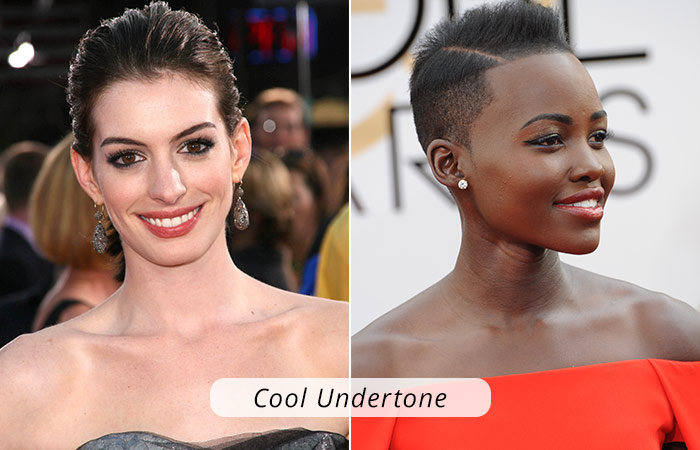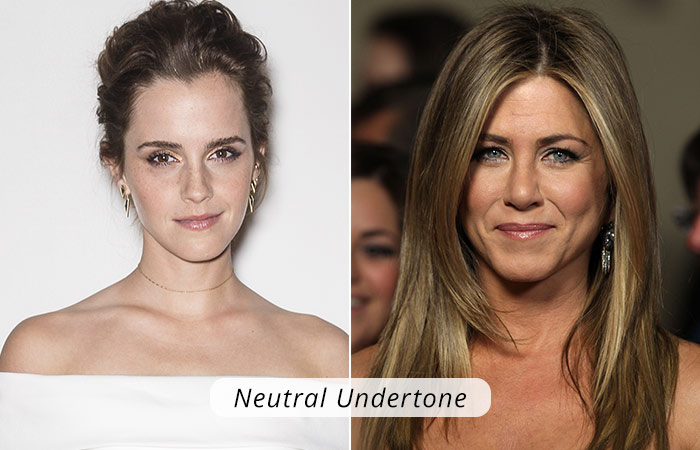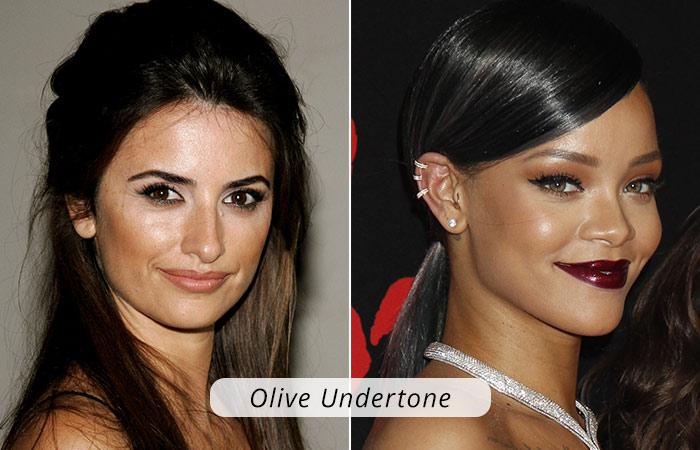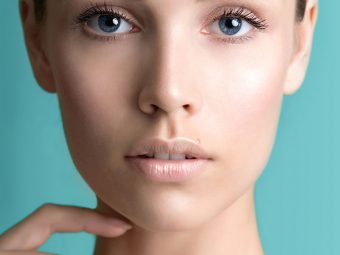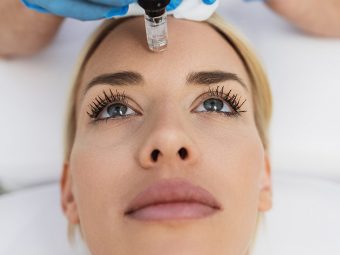How To Find Your Skin Undertone: Cool, Warm, Olive, Or Neutral
Simple tips to help you identify your skin's undertone and nail the right makeup look.
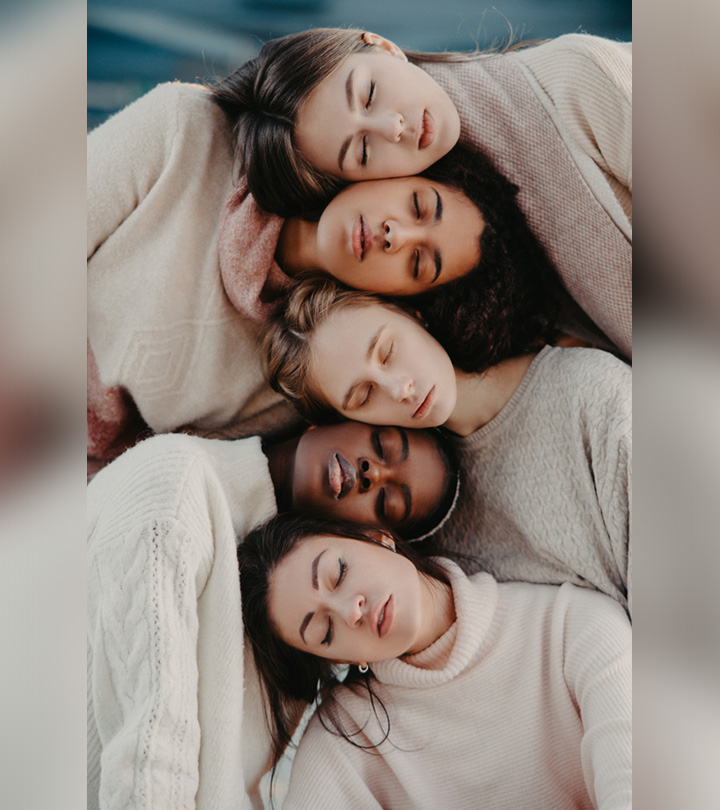
Choosing the right shade of lipstick or foundation that complements your skin tone can be tough if you do not know your skin undertone. If you are wondering why skin undertone is important and how to find your skin undertone, we can guide you. Most of us prefer to pick lipstick shades or nail polishes based on how the color looks. However, fail to understand that the shades that look lovely on others may not suit us. Understanding your skin undertones will solve half of your makeup woes. Read on to understand everything about skin undertones.
In This Article
What Is Skin Undertone?
The skin undertone is the hue under your original skin color or the surface tone (also known as the overtone).
When you look in the mirror, your skin may appear ivory, fair, medium, tan, or dark. That’s the color of your skin’s surface. Undertone is the color of your skin that is just beneath that. While you may have the same skin color as anyone else, you may not have the same skin undertone. And this makes all the difference.
Be it foundation, lipstick, or clothing – your skin undertone is the factor that decides which colors or shades will suit you. In the next section, we elaborate on why it is crucial to know your skin’s undertone.
Why Does Skin Undertone Matter?
When you know your undertone, you can easily choose clothes and makeup that complement your skin tone.
When choosing a new lipstick, foundation, or dress, you are drawn to its color. You often pick them based on how good they look (at the counter or on someone else). Such “love-at-first-sights” are pretty common for most of us. But when you try it yourself, you see that it doesn’t look right on you. And most of the time, you are confused why this happens. This is because it will not look good on you unless it goes with your skin undertone.
Knowing your undertone also comes in handy in such situations. Now, let’s try to find out what your skin undertone is.
Types Of Undertones
Traditionally, undertones are divided into three categories.
1. Warm Undertone
You fall into this category if you have a yellow, peach, or golden skin undertone.
2. Cool Undertone
You fall into this category if you have reddish, pink, or blue skin undertones.
3. Neutral Undertone
This is for those who have the best of both worlds – a blend of both warm and cool undertones.
However, some people do not belong to any of these three categories. They have an olive undertone. People often tend to confuse the olive undertone with a neutral undertone. But, in reality, the olive undertone is different and has specific characteristics. It has a bit of yellow and greenish-gray hue, and this is why it’s unique.
It is a common misconception that fair-skinned people have a cool undertone, and dark-skinned people have a warm undertone. It can be the other way round too. And that is why finding your undertone is crucial before you buy foundation and other makeup products. Keep reading to learn the ways to determine your skin undertone.
How To Identify Your Skin Undertone
Determining your skin is not a difficult task. You can do it at home by observing a few points closely.
1. Observe Your Veins
This is the quickest way to determine your skin undertone. See if the veins are visible on your wrist. If they are, see which is the predominant color. There can be several scenarios:
- If the veins appear greenish, you have a warm undertone.
- If the veins appear bluish or purple, you have a cool undertone.
- If you cannot determine the color of your veins or if they match your skin color, it is most likely that you have either neutral or olive undertones.
2. The Jewelry Test
Hold both golden and silver jewelry against your skin (or lay them on your wrist).
- If the gold jewelry makes you look good, you have warm or olive undertones.
- If rose gold, platinum, or silver jewelry look more flattering on you, you have cooler undertones.
- However, if both gold and silver jewelry looks good on you, you have a neutral undertone.
You can do this test with gold/yellow and silver-colored foils. Hold them against your skin (one by one). Check the reflection of the foils on your skin.
- If your skin glows against golden/yellow foil, you have either a warm or olive undertone.
- If it glows against the silver foil, you have a cool undertone.
- If your skin looks good against both the foils, you have a neutral undertone.
3. Take The Color Test
Hold garments of different colors against your skin. It is better if you wear them and stand in front of a mirror. You have:
- Cool Undertone: If you look good in purple, black, emerald, bright blue, lavender, and pink.
- Warm Undertone: If you look good in olive green, brown, coral, orange, amber, yellow, peach, and similar shades.
- Neutral Undertone: If you look good in almost any hue you wear.
- Olive Undertone: If you look good in green, purple, pink, and almost any color except the pastel shades.
4. Check The Way Your Skin Behaves Under The Sun
Observe how the sun affects your skin.
- If you get sunburned easily, you might have a cool undertone. In such cases, the skin often turns pinkish or reddish under the sun.
- If you do not get sunburned easily, but tan a lot, you might have a warm undertone. In such cases, the skin often looks a bit yellowish (if you are fair) and on the olive side (if your skin tone is dark).
5. Check the Skin Behind The Ears
- If the delicate area behind your ears appears yellowish, you have a warm undertone.
- If it is rosy and a bit pinkish, you have a cool undertone.
The difference between the overtone and undertone can get confusing. When purchasing clothing and makeup, you have to consider both. In the next section, we have discussed the difference between skin overtone and undertone.
Overtone Vs. Undertone: What Is The Difference?
The skin undertone is invisible. It is the subtle hue underneath the surface tone or the overtone. On the other hand, the overtone is your skin color – the color that you see when you look at your face in the mirror.
The skin overtone may change (due to tanning or during winters), but the undertone never changes.
Knowing your undertone and the overtone helps you choose your makeup and clothing. Here is a simple guide to help you make better choices.
How To Pick The Right Foundation For Your Undertone
1. For Cool Undertone
You may have pinkish or reddish surface tones around the T-zone. Pick a foundation that can warm it up a bit. If you are on the fairer side, you can go for a blend of ivory foundation with just a hint of yellow in it. Don’t be afraid to mix your foundations. The yellow tint helps in balancing the pink or red surface tone.
2. For Warm Undertone
If you are fair, your skin may have a peach to golden-beige hue. If you have a deeper skin tone, it appears more like honey or has a golden hue. Go for foundations that have a bit golden or yellow undertone.
3. For Neutral Undertone
Choose a foundation that leans subtly towards the golden hue. Avoid anything that makes your skin yellow, golden, pink, or red.
4. For Olive Undertone
People with olive undertones have a very subtle greenish hue, along with natural and warm tones. Just like people with neutral undertones, pick a foundation that has a subtle leaning towards golden. Avoid any foundation shade that turns your skin golden, yellow, cool red, or pink.
When checking your foundation, use a Q-tip to apply it on your cheekbones, near your jawline, and around your nose. Take a mirror and check it under natural light. If the foundation disappears into your skin, that’s the one for you.
Most makeup brands now have foundation shade ranges, such as fair, light, beige, neutral, medium, and dark. What about your lip shades and eyeshadow? Take your cues from the following section.
Which Colors Work Best For Which Skin Undertone?
1. Cool Undertones
- If you are light cool (on the fairer side): Experiment with soft, pinks, muted mauves, and any bold and bright color. However, make sure that your bright colors have a bluish or purplish undertone.
- If you are dark cool: You can go a bit bolder. Try fuschia pink, deep plum, and poppy. Pick blue-toned colors.
These colors will appear great on your lips. For eyeshadow, try colors like deep purple and gray.
2. Warm Undertones
- If you are light warm (on the fairer side): Go for sun-kissed pink, warm and sandy neutrals when choosing lighter shades. When selecting darker shades, think reds, rich wine, berries, and brick red.
- If you are dark warm (on the darker side): Go for warm and deep burgundy and tangerine pinks and oranges. Even fiery reds will look awesome on your lips.
For shadows and bronzers, reach out for vibrant corals, brown neutrals, or earth-toned browns, golds, peachy pinks, and orange-reds. Metallic bronzes can transform you into a diva.
3. Neutral Undertone
You have the liberty to wear anything that you want. Add drama to your look by rocking deep purples and golden shadows with pops of orange and reds. Play with your imagination and creativity without worrying about looking muddled.
4. Olive Undertone
A little hint of color can glam up olive skin. Shades such as rosy pink, warm peach, royal blue, deep plum, burnt orange, and sapphire can make you glow. For lipsticks, you can pick wine reds, cranberry, or deep pinks. Coral hues and shades with pink undertones will look good on you. However, just like people with a neutral undertone, you can sport any color. Lucky you!
Knowing your skin undertone is essential as it determines what foundation or lipstick shade will suit you. If you want to know how to find your skin undertone, the quickest way to do that is to check your vein color. People with green veins have a warm undertone, while people with blue veins have a cool undertone. Another way to determine your skin undertone is to try out gold or silver jewelry or see if your skin gets sunburned easily. Once you know your skin undertone, you can select the right shade of foundation, eyeshadow, or lipstick for the perfect makeup look.
Frequently Asked Questions
Can I change my skin tone?
Yes, you can. Tanning and skin lightening products and cosmetic procedures often change the skin tone.
Which skin tone gets tanned easily?
Fitzpatrick skin types 5 (moderate brown skin color) and 6 (dark brown or black skin color) tan profusely.
Is burgundy a cool or warm shade?
Burgundy (mix of purple and red) is a cool-toned shade.
Recommended Articles:




